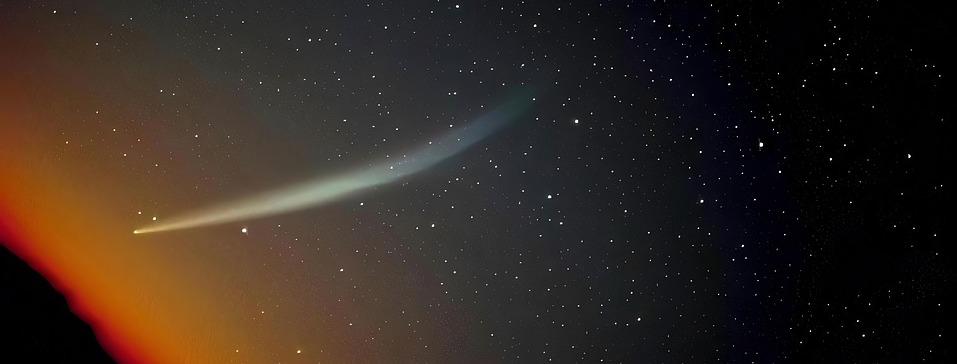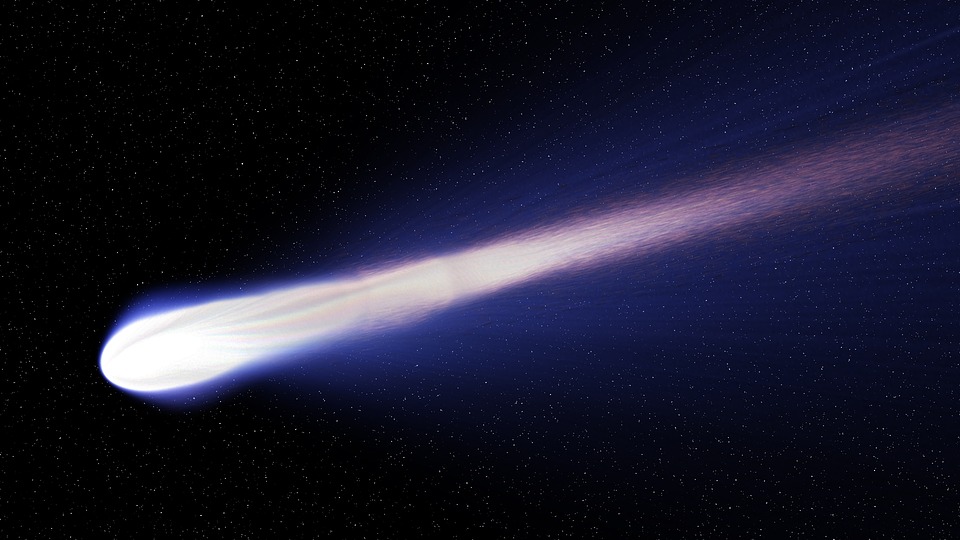What is a comet?

A comet is a small celestial body of ice, dust, and gas. Comets are believed to be remnants of the formation of the solar system. They typically have highly elliptical orbits that bring them close to the Sun at their closest approach, also known as perihelion. As a comet approaches the Sun, its surface vaporizes, releasing gas and dust into space, creating a visible coma (a fuzzy cloud-like structure) around the nucleus. The coma is a cloud of gases that surrounds the nucleus of a comet. The coma may also form a tail, which points away from the Sun due to the pressure of the solar wind. Comets can be observed from Earth with the naked eye and have been celebrated throughout history, with some comets being associated with significant events and omens in various cultures. Comets are thought to have formed during the early stages of the solar system's development, about 4.6 billion years ago. It is believed that comets originated from the Kuiper Belt and the Oort Cloud, regions of the outer solar system rich in icy bodies.

The Kuiper Belt is a disk-shaped region of space beyond Neptune's orbit, and it contains many small, icy bodies, including dwarf planets such as Pluto. The Oort Cloud is a spherical cloud of icy bodies surrounding the solar system at about 50,000 astronomical units (AU) from the Sun. It is believed that the gravitational interactions between the giant planets, particularly Jupiter and Saturn, caused some of the icy bodies in the Kuiper Belt and Oort Cloud to be perturbed into orbits that brought them closer to the Sun. As these bodies approached the Sun, they began to vaporize, releasing gas and dust, forming the comets' characteristic coma and tails. Over time, repeated passes around the Sun may cause the comets to lose some volatile materials and change their composition. This can lead to the formation of a crust, which protects the underlying volatile ice from further sublimation, making the comet appear more like a rocky asteroid.
